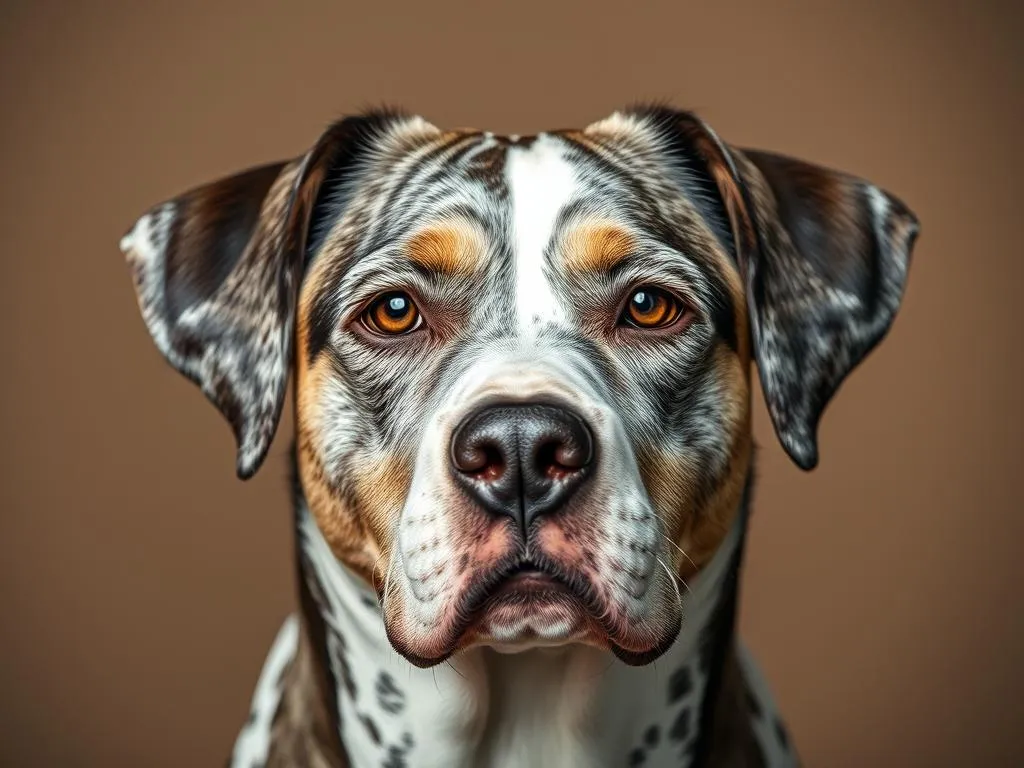
Introduction
When we talk about merle dog genetics, we dive into a fascinating world of color patterns and genetic inheritance. The term “merle” refers to a unique coat pattern characterized by patches of diluted color, often resulting in striking visual appearances in dogs. This pattern can appear in a variety of breeds, making it a popular choice among dog lovers.
Understanding the significance of genetics in dog breeding is essential. Genetic traits influence not just appearance but also health and temperament. The rise in popularity of merle dogs across various breeds highlights the need for a deeper understanding of their genetics, particularly as it relates to ethical breeding practices. Being informed about these aspects can help breeders make responsible decisions that prioritize the health and well-being of their dogs.
This article aims to provide a comprehensive overview of merle dog genetics, exploring everything from the basics of genetic inheritance to the specifics of breeding practices. Readers will gain insights into the unique characteristics of merle dogs, the ethical considerations of breeding them, and how to care for these beautiful animals.
The Basics of Dog Genetics
Understanding Genes and Alleles
At the core of merle dog genetics are genes and alleles. Genes are segments of DNA that carry information about specific traits, while alleles are different versions of a gene that can exist at a particular locus. For instance, the gene that determines a dog’s coat color may have several alleles, resulting in a variety of shades and patterns.
How Traits are Inherited
Traits in dogs are inherited according to principles established by Gregor Mendel, often referred to as Mendelian inheritance. This process involves dominant and recessive traits. In simple terms, a dominant trait requires only one copy of the gene to be expressed, while a recessive trait needs two copies. Understanding this fundamental concept is crucial when discussing the inheritance of the merle pattern.
The Role of DNA in Dog Genetics
Dog DNA plays a pivotal role in determining breed characteristics, including physical appearance, temperament, and health predispositions. Advances in genetic testing have made it easier for breeders to understand the genetic makeup of their dogs, allowing for more informed breeding decisions.
What is Merle?
Definition of Merle
The merle coat pattern is a striking blend of colors, typically featuring darker patches on a lighter background. This pattern can vary widely, with some dogs exhibiting a mottled appearance, while others may have larger patches. Some breeds, like the Australian Shepherd and the Dachshund, showcase this pattern prominently, making them highly sought after.
Types of Merle Patterns
Merle patterns can be categorized into different types, including:
- Blue Merle: Characterized by a grayish-blue base with darker patches.
- Red Merle: Features a reddish-brown base with lighter patches.
- Black Merle: A dark coat with a mix of lighter shades.
Each type of merle has its unique charm and appeal, contributing to the overall diversity seen in merle dogs.
How Merle is Inherited
The genetics behind the merle pattern is tied to the M locus in dogs. This locus contains alleles that dictate whether a dog will display the merle pattern. A dog must inherit at least one copy of the merle allele from its parents to express the merle coat pattern. This leads to some complexities in breeding, particularly when considering health implications.
The Genetics Behind Merle Dogs
The M Locus and Merle Variation
The M locus is the specific location on a dog’s DNA that determines the merle coat pattern. It has several alleles, with the merle allele being dominant. This means that if a dog inherits the merle allele from either parent, it will likely exhibit the merle pattern. However, the presence of this allele can result in various degrees of color dilution, leading to a wide range of appearances.
Dominant vs. Recessive Merle Genes
While the merle pattern is considered a dominant trait, it is not without complications. When two merle dogs are bred together, there is a risk of producing puppies with double merle genetics, which can lead to severe health issues such as deafness and vision problems. Therefore, understanding the nuances of merle dog genetics is crucial for responsible breeding.
Health Implications of Merle Genetics
Health issues associated with merle genetics are a significant concern for breeders and owners alike. Dogs with a double merle genotype are at a higher risk for:
- Deafness: Many double merles experience hearing loss.
- Vision Problems: This can include anything from mild vision impairment to complete blindness.
Given these potential health complications, genetic testing is vital before breeding any merle dog. This ensures that breeders can make informed decisions that prioritize the health and welfare of their puppies.
Merle Breeding Practices
Ethical Considerations in Breeding Merles
Ethical breeding practices are paramount when it comes to merle dogs. The goal should always be to produce healthy puppies with sound temperaments. Responsible breeders will avoid breeding two merle dogs together to minimize the risk of health problems associated with double merle genetics.
Responsible Breeding Strategies
When breeding merle dogs, it’s essential to pair a merle dog with a non-merle dog. This strategy not only reduces the likelihood of producing double merles but also maintains the diversity of genetic traits within the breed. Moreover, thorough genetic testing and health screenings should be conducted on both parents to ensure they do not carry genes that could lead to hereditary health issues.
Common Myths About Merle Breeding
Several misconceptions surround merle dog genetics and breeding practices. One common myth is that all merle dogs are unhealthy. While it’s true that there are health risks, many merle dogs can lead healthy lives if bred responsibly. Education and awareness are critical in dispelling these myths and promoting ethical breeding practices.
Popular Breeds with Merle Patterns
Breeds Known for Merle Patterns
Several dog breeds are renowned for their stunning merle patterns, including:
- Australian Shepherds: Known for their intelligence and agility, these dogs often exhibit beautiful blue or red merle coats.
- Dachshunds: The merle pattern adds a unique flair to these beloved companions, enhancing their already charming appearance.
- Collies: Merle patterns in Collies can result in striking visual effects, making them a popular choice among dog enthusiasts.
Unique Characteristics of Merle Breeds
Each breed that showcases the merle pattern comes with its own set of unique characteristics. For instance, Australian Shepherds are known for their high energy and trainability, making them excellent working dogs. Dachshunds, on the other hand, have a more laid-back temperament, making them ideal companions for families and individuals alike.
Caring for Merle Dogs
Grooming Needs
Merle dogs often have a variety of coat types, which means grooming needs can differ. Regular brushing is crucial to remove loose hair and prevent matting. For breeds with longer fur, specialized grooming tools may be necessary to maintain coat health and appearance.
Health Monitoring
Regular health check-ups are vital for merle dogs, particularly due to the potential genetic health issues associated with their coat pattern. Owners should be proactive in scheduling vet visits and screenings, ensuring their pets receive the best care possible.
Training and Socialization Tips
Training and socialization are essential for all dogs, but particularly for merle breeds that may possess unique temperamental traits. Positive reinforcement techniques work best, as they help build trust and encourage learning. Early socialization with other dogs and people can also help prevent behavioral issues down the line.
Conclusion
In summary, understanding merle dog genetics involves a deep dive into the science of genetics and responsible breeding practices. From recognizing the complexities of the M locus to navigating the ethical considerations of breeding, knowledge is key to ensuring the health and well-being of these beautiful dogs.
As we conclude, it’s essential to emphasize the importance of responsible ownership and breeding practices. Educated decisions not only enhance the quality of life for merle dogs but also contribute to a healthier dog population overall. For those interested in further exploring the fascinating world of dog genetics and breeding, continued research is highly encouraged.









